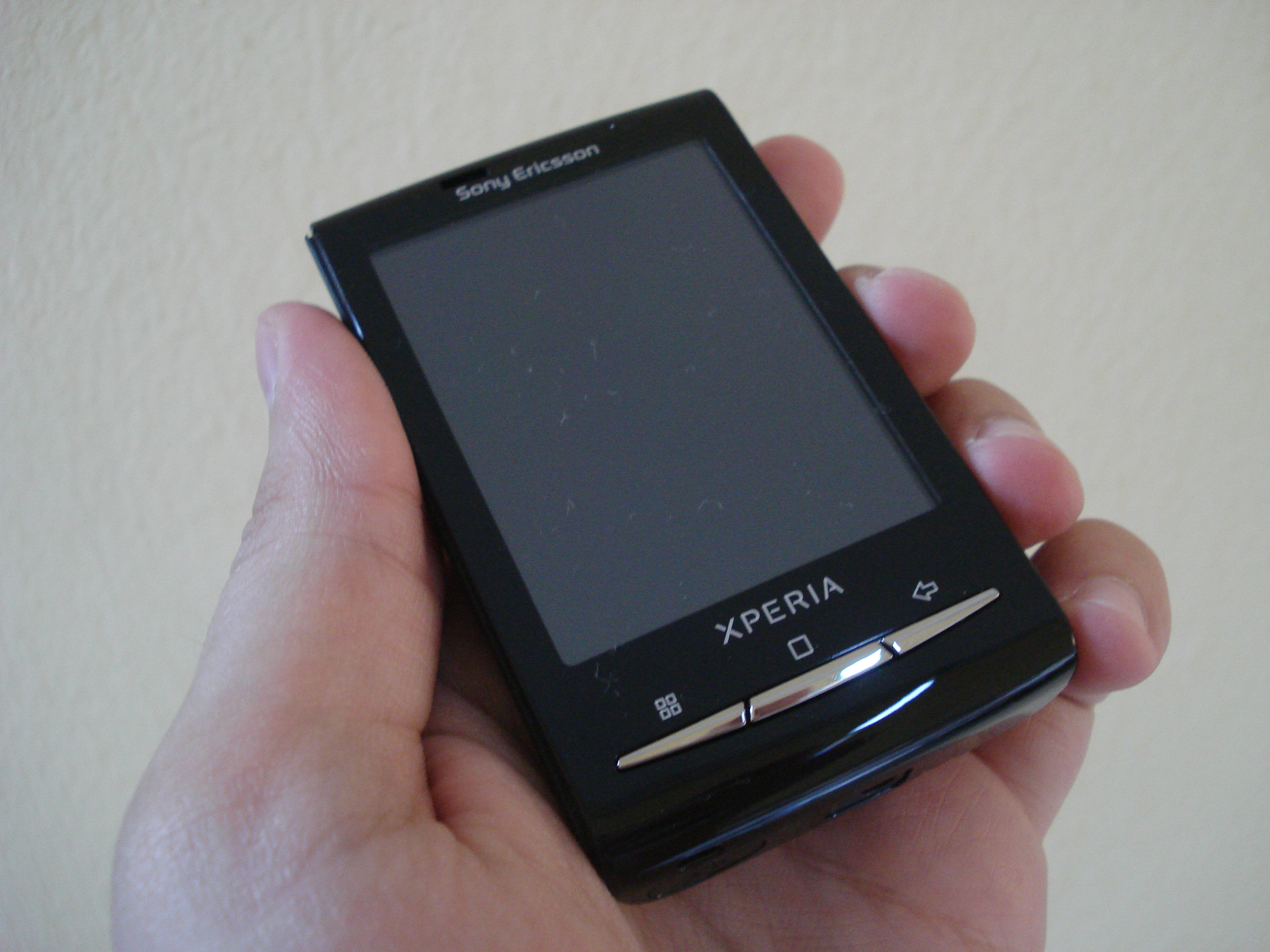|
X10 Mini
The Sony Ericsson Xperia X10 Mini—also known as the E10i (international) or E10a (Americas)—is a smartphone by Sony Ericsson in the Xperia series. It is the second Sony Ericsson smartphone to run the Android operating system, and also one of the smallest Android handsets to date. The X10 Mini was first revealed on 14 February 2010. Apart from the physical dimensions, the phone also differs feature-wise as compared to the X10. Text input is done via a virtual keypad on the Mini and a full QWERTY, QWERTZ, or AZERTY slide-out keyboard on the X10 Mini pro. Sony Ericsson Xperia X10 Mini pro The Sony Ericsson Xperia X10 Mini pro (U20i/U20a) is an upgrade to the X10 Mini with many of the internal specifications being identical. The major differences between the original X10 Mini and X10 Mini pro is the replaceable battery, and the pro having slightly larger dimensions (3.5 × 2.0 × 0.7 inches opposed to 3.3 × 2.0 × 0.6 inches). The X10 Mini and X10 Mini pro are de ... [...More Info...] [...Related Items...] OR: [Wikipedia] [Google] [Baidu] |
Sony Mobile Communications
Sony Mobile Communications Inc. ( ja, ソニーモバイルコミュニケーションズ株式会社) was a multinational telecommunications company founded on October 1, 2001, as a joint venture between Sony Group Corporation and Ericsson. It was originally incorporated as Sony Ericsson Mobile Communications, and headquartered in London, England, until Sony acquired Ericsson's share in the venture on February 16, 2012. On April 1, 2021, Sony integrated its electronics businesses including Sony Mobile into one company called Sony Corporation. Prior to April 1, 2021, Sony Mobile exclusively created Android-powered smartphones under the Xperia sub-brand name; it also developed tablet computers (Sony Tablet), smartwatches (Sony SmartWatch) and fitness trackers (Sony SmartBand), alongside accessories and software for the devices. Sony Mobile had research and development facilities in Lund, Sweden; Beijing, China; Tokyo, Japan; and San Francisco, United States. At its peak in 2 ... [...More Info...] [...Related Items...] OR: [Wikipedia] [Google] [Baidu] |
TRS Connector
A phone connector, also known as phone jack, audio jack, headphone jack or jack plug, is a family of electrical connectors typically used for analog audio signals. A plug, the male connector, is inserted into the jack, the female connector. The phone connector was invented for use in telephone switchboards in the 19th century and is still widely used. The phone connector is cylindrical in shape, with a grooved tip to retain it. In its original audio configuration, it typically has two, three, four or, occasionally, five contacts. Three-contact versions are known as ''TRS connectors'', where ''T'' stands for "tip", ''R'' stands for "ring" and ''S'' stands for "sleeve". Ring contacts are typically the same diameter as the sleeve, the long shank. Similarly, two-, four- and five-contact versions are called ''TS'', ''TRRS'' and ''TRRRS connectors'' respectively. The outside diameter of the "sleeve" conductor is . The "mini" connector has a diameter of and the "sub-mini" co ... [...More Info...] [...Related Items...] OR: [Wikipedia] [Google] [Baidu] |
A2DP
In order to use Bluetooth, a device must be compatible with the subset of Bluetooth ''profiles'' (often called services or functions) necessary to use the desired services. A Bluetooth profile is a specification regarding an aspect of Bluetooth-based wireless communication between devices. It resides on top of the Bluetooth Core Specification and (optionally) additional protocols. While the profile may use certain features of the core specification, specific versions of profiles are rarely tied to specific versions of the core specification, making them independent of each other. For example, there are Hands-Free Profile (HFP) 1.5 implementations using both Bluetooth 2.0 and Bluetooth 1.2 core specifications. The way a device uses Bluetooth depends on its profile capabilities. The profiles provide standards that manufacturers follow to allow devices to use Bluetooth in the intended manner. For the Bluetooth Low Energy stack, according to Bluetooth 4.0 a special set of profiles app ... [...More Info...] [...Related Items...] OR: [Wikipedia] [Google] [Baidu] |
Bluetooth 2
Bluetooth is a short-range wireless technology standard that is used for exchanging data between fixed and mobile devices over short distances and building personal area networks (PANs). In the most widely used mode, transmission power is limited to 2.5 milliwatts, giving it a very short range of up to . It employs UHF radio waves in the ISM bands, from 2.402GHz to 2.48GHz. It is mainly used as an alternative to wire connections, to exchange files between nearby portable devices and connect cell phones and music players with wireless headphones. Bluetooth is managed by the Bluetooth Special Interest Group (SIG), which has more than 35,000 member companies in the areas of telecommunication, computing, networking, and consumer electronics. The IEEE standardized Bluetooth as IEEE 802.15.1, but no longer maintains the standard. The Bluetooth SIG oversees development of the specification, manages the qualification program, and protects the trademarks. A manufacturer must meet Blue ... [...More Info...] [...Related Items...] OR: [Wikipedia] [Google] [Baidu] |



